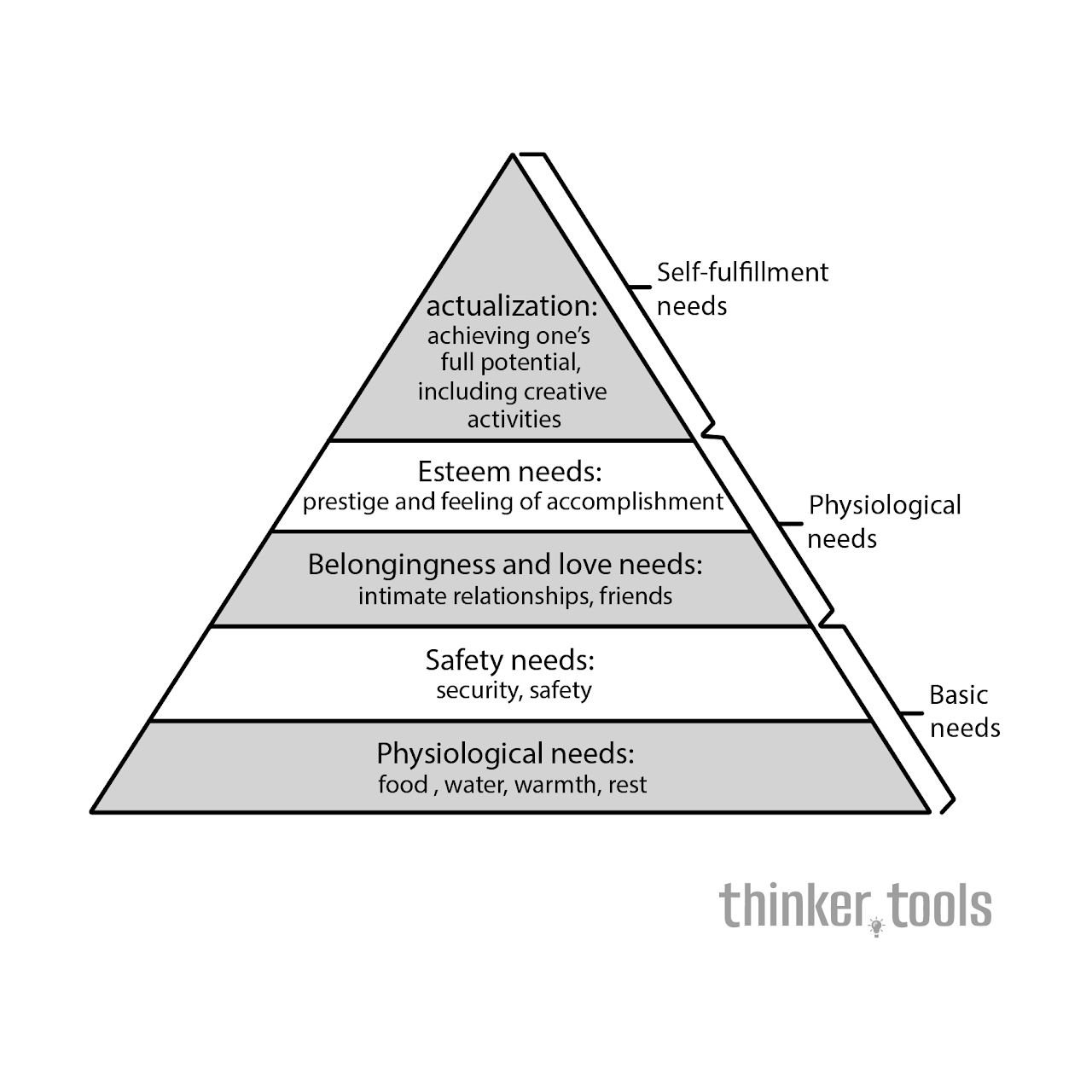
What is Maslow's Hierarchy?
Maslow's Hierarchy is a motivational theory that organizes human needs into five hierarchical levels, typically visualized as a pyramid. The theory suggests that people are motivated to fulfill basic needs before moving on to more advanced needs. From bottom to top, these levels are: Physiological, Safety, Love/Belonging, Esteem, and Self-Actualization.
The framework provides a lens for understanding why people behave as they do and what they need to thrive. It suggests that unmet needs at lower levels will dominate attention and behavior until satisfied, after which higher-level needs become more prominent motivators.
The History and Origin
Abraham Maslow, an American psychologist, introduced this theory in his 1943 paper "A Theory of Human Motivation" and further developed it throughout his career. Maslow was part of the humanistic psychology movement, which focused on human potential rather than dysfunction.
His theory was revolutionary because it studied mentally healthy individuals rather than those with psychological problems, asking "What makes people thrive?" rather than "What makes people sick?" This positive approach influenced fields far beyond psychology, including business management, education, and personal development.
How to Use Maslow's Hierarchy Framework
Understanding the Five Levels
Level 1: Physiological Needs
- Basic survival requirements: food, water, warmth, rest
- These dominate when unmet
- Examples: Hunger, thirst, shelter, sleep
Level 2: Safety Needs
- Security and protection from harm
- Includes physical, emotional, and financial safety
- Examples: Personal security, employment, health, property
Level 3: Love and Belonging Needs
- Social connection and relationships
- Includes friendship, intimacy, family, sense of connection
- Examples: Friendships, romantic relationships, community
Level 4: Esteem Needs
- Respect from others and self-respect
- Includes recognition, status, and achievement
- Examples: Accomplishment, mastery, recognition, respect
Level 5: Self-Actualization Needs
- Reaching full potential and creative expression
- Becoming the best version of yourself
- Examples: Personal growth, peak experiences, fulfillment
Step-by-Step Application
Step 1: Assess Current Level
Identify where you or others currently are:
- What needs feel most pressing?
- What occupies most mental energy?
- What causes the most stress when threatened?
Step 2: Address Foundational Needs
Ensure lower-level needs are reasonably met:
- You can't focus on creativity when hungry
- Job insecurity undermines higher pursuits
- Loneliness blocks self-actualization
Step 3: Recognize Movement
Understand that people move up and down the hierarchy:
- Job loss might shift focus to safety needs
- New relationships might elevate belonging needs
- Success might activate esteem needs
Step 4: Support Appropriate Needs
Match support to the current need level:
- Don't discuss self-actualization with someone worried about rent
- Don't focus only on salary with someone seeking purpose
- Recognize what level someone is operating from
Step 5: Create Growth Conditions
Foster environments that support progression:
- Ensure basic needs are met
- Provide psychological safety
- Build community and connection
- Offer recognition and growth opportunities
Practical Examples
Workplace Application: A company notices high turnover despite good salaries. Using Maslow's framework, they realize employees' belonging needs aren't met. They implement team-building programs and mentorship, dramatically improving retention.
Educational Setting: A teacher recognizes that students from food-insecure homes struggle with learning (physiological needs unmet). She starts a breakfast program, after which academic performance improves significantly.
Personal Development: Maria feels stuck despite career success. Analyzing through Maslow's lens, she realizes she's met esteem needs but craves self-actualization. She begins creative projects and volunteer work, finding new fulfillment.
Relationship Insight: A couple argues frequently about money. Understanding that one partner experienced childhood poverty (safety needs), they address financial security fears before tackling other relationship issues.
Benefits and Life Impact
Understanding Maslow's Hierarchy transforms how you approach life and relationships:
Enhanced Self-Awareness: Recognizing your current need level helps you understand your motivations and make better decisions about priorities.
Improved Empathy: Understanding others' need levels prevents judgment and increases compassion for different priorities and behaviors.
Better Leadership: Leaders who address team members' actual need levels create more motivated, productive environments.
Effective Communication: Tailoring messages to others' need levels increases receptivity and understanding.
Personal Growth Strategy: The hierarchy provides a roadmap for personal development, showing what to address for continued growth.
Relationship Success: Understanding partners' and family members' changing needs helps maintain strong connections through life transitions.
Social Understanding: The framework explains societal behaviors and helps in creating policies and programs that address real needs.
Resilience Building: Recognizing that setbacks might temporarily shift your focus to lower needs reduces self-judgment during difficult times.
Life Balance: Understanding all five levels helps create a balanced life that addresses multiple needs rather than fixating on one area.
Maslow's Hierarchy offers a compassionate and practical framework for understanding human behavior. It reminds us that everyone is doing their best given their current circumstances and need levels. By recognizing where we and others are on this hierarchy, we can provide appropriate support, set realistic expectations, and create conditions for growth. The framework's enduring popularity stems from its intuitive truth – we've all experienced how difficult it is to think about personal growth when worried about paying bills, or how meaningful connection becomes once basic needs are secure. In applying this framework, we gain not just intellectual understanding but practical wisdom for navigating the complex landscape of human needs and aspirations.